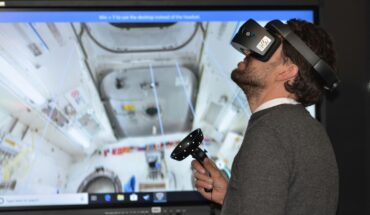Both for achieving environmental targets and for lowering running costs, energy efficiency in commercial buildings now takes the front stage. From water use and insulation to lighting and HVAC to building management, every element of a structure adds to total energy use.
Through careful design of these components, commercial buildings not only lower costs but also provide pleasant, environmentally friendly surroundings appealing to tenants, staff, and consumers. Beyond a basic improvement, increasing energy efficiency is a whole method that changes the operation of a structure and affects the surroundings.
Comprehensive Energy Audit
Improving energy efficiency in buildings starts with an energy audit, which offers a comprehensive study of the present energy use of your facility. Energy specialists assess every system throughout this process, pointing out waste, inefficiencies, and areas for development. Clear images of where energy is being utilized, lost, or squandered provided by the audit findings enable focused improvements. This crucial stage gives improvements top priority by identifying places most likely to save energy. Having an energy audit under hand helps you to gather the information required to create a comprehensive action plan including everything from insulation enhancements to HVAC improvements to lighting upgrades.
Energy-Efficient Lighting Systems
Since lighting uses so much of the energy used in commercial buildings, it is among the most efficient places for changes in design. By substituting energy-efficient LED bulbs with out-of-date lights, one greatly lowers power usage while nonetheless producing excellent illumination. LEDs offer a far longer lifespan than conventional lights and utilize a fraction of the energy consumed, therefore lowering replacement expenses and maintenance time. Investing in effective lighting produces instant energy savings without sacrificing illumination quality. Using sensors and timers to modulate light levels depending on occupancy and daylight availability, automated lighting systems improve energy efficiency even more. While daylight sensors change artificial lighting in reaction to natural light, therefore preserving continuous illumination, motion sensors cut energy waste in empty spaces.
HVAC Systems
Although they are fundamental for preserving comfortable interior conditions, HVAC systems also account for one of the biggest energy consumption in commercial buildings. From equipment improvements to normal maintenance, optimizing HVAC systems calls for numerous approaches; all meant to increase efficiency and lower energy waste. First, replace present standards with energy-efficient versions using variable-speed compressors and high-efficiency filters. These parts reduce heating and cooling expenses by using less energy and producing a more steady interior temperature. HVAC efficiency depends on regular maintenance in great part. By making sure systems run at the maximum performance, that is, by cleaning filters, sealing ducts, and calibrating thermostats, energy loss is avoided, and equipment strain is lowered. Smart thermostats improve this procedure by automatically changing tempers depending on occupancy and outside factors.
Improve Building Insulation
Energy efficiency depends much on insulation and sealing as they stop energy loss via windows, doors, walls, and ceilings. In winter, inadequate insulation lets heat escape; in summer, cool air leaks out, which increases HVAC usage and drives greater energy costs. By building a barrier that stabilizes inside temperatures, upgrading insulation helps to lower the heating and cooling system load. Walls, attics, and ceilings, each of which adds to a more energy-efficient envelope around the building, are common places for insulation enhancements. Maintaining an energy-efficient structure depends on equally careful sealing of air leaks. Air escapes gaps around windows, doors, and vents, which drives HVAC systems to operate more aggressively to keep target temperatures. Easy but powerful ways to cut energy loss are weatherstripping, caulking, and insulating windows with energy-efficient glass.
Implement Energy Management
Energy management systems provide real-time tracking, monitoring, and modification over several building processes by bringing visibility and control to energy consumption. These systems gather information on temperature, power usage, and other performance criteria to help you understand where energy is being consumed and how it may be best utilized. This knowledge helps to make data-driven decisions possible and facilitates the implementation of modifications directly affecting energy efficiency. Monitoring systems also point up anomalies, therefore enabling the quick correction of inefficiencies. Energy management systems depend critically on automated controls as they modify energy consumption in response to occupancy, external conditions, and peak demand times. Integration of automation guarantees that, even with demand rising, energy usage is low during off-peak hours.
Conclusion
Increasing energy efficiency in commercial buildings calls for a thorough strategy that precisely and with intent covers lighting, HVAC, insulation, and energy management. Accept these actions and open the path for a day when energy efficiency defines success in commercial building management, therefore defining sustainability and responsibility.








